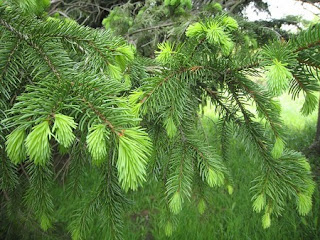The long and dry winter is coming to an end and you start looking around the yard. You’re noticing that some of the trees aren’t looking very healthy. Evergreens especially can start to look brown and start dropping their needles. The summer is hot and there is a drought and your trees are thristy. Some of your trees might even be dying due to overly dry conditions. Try these tips to save your trees and keep them healthy even in the driest of years.
Trees can do different things under different weather situations. Many parts of the United States are once again in drought conditions and the dry winds don’t help the situation at all. The lack of snow and snow cover through a dry winter with the evaporation effect of the wind can dry the tree itself and the ground all the way down to the roots.
During drought conditions, your local area might even have water restrictions. You can see and feel the ground underneath your tree is hard as a rock, and any watering might just run off and not soak in at all. What you need to do is called root feeding or root watering.
Root Feeding Can Save Your Dying Trees
Most tree roots are at a depth of between 6” and 24” and spread out an area of two to four times the diameter of the tree crown. The one way to really help a tree that has been affected by dry conditions or dying tree is to root feed it. You can buy what is called either a root feeder or a water needle at any hardware store or garden shop.
The one product I have used most is called the  Ross root feeder. It is a long skinny tube with a canister at the top and a connection for a garden hose. In the canister, you can put fertilizer pellets that will fertilize the tree at the roots as you water it. You don’t have to use the fertilizer pellets, you can just attach the hose to the root feeder and water the roots.
Ross root feeder. It is a long skinny tube with a canister at the top and a connection for a garden hose. In the canister, you can put fertilizer pellets that will fertilize the tree at the roots as you water it. You don’t have to use the fertilizer pellets, you can just attach the hose to the root feeder and water the roots.
To use the root feeder, attach the garden hose to it and push the needle into the ground. If the ground is really hard and compacted, turn on the water and let the water work for you and this will help the root feeder push into the ground easily.
There is a lever on the top of the root feeder that controls the flow of the water. You can have the lever fully open or let the water soak into the ground slowly.
Root feed under the outer branches known as the drip zone. The package will have specific instructions on where to place the root feeder at how many places and at what depth depending on the size and type of the tree. There are several different types of fertilizer pellets depending if the tree is an evergreen, deciduous tree or a fruit tree.
The first time I used a root feeder, we had bought a house during a drought and with strict watering restrictions. There was a 12’ ponderosa pine in the middle of the yard and it was almost totally brown and the thought was it wouldn’t make it another winter.
I decided to try root feeding it. I did use the fertilizer pellets the first time I root fed it and then over the summer continued to use the root feeder to water the roots. The next summer the tree was healthy and green. Today it is one of the nicest ponderosa pines in the neighborhood and about 30’ tall.
You don’t have to use the fertilizer, just a good deep watering is all that’s needed sometimes to bring a stressed tree back to health.
Checking for Bugs
If the tree isn’t responding to the root feeding, check for bugs. Two things to look for are bugs that are boring into the bark of the tree or take a piece of paper and hold it under a branch of an evergreen and shake the branch.
If tiny bugs fall onto the paper that could indicate a bug problem, you might try spraying the tree with a good hard spray that will knock off many of the bugs, otherwise, you should call a tree doctor or arborist to check out the tree.
Dry windy and especially drought conditions can really stress a tree and a tree under stress conditions might not be strong enough to fight off bugs or disease. Keeping the roots good and watered is very helpful.
You don’t want to over do the watering. Usually, the water will soak in, but if it gets too wet than the roots can be starved for oxygen as the water takes the place of oxygen. To increase airflow and moisture to your tree roots you could take out the grass and put in bark or wood ships around the tree.
Conclusion
Root feeding is a great way to keep all of your trees healthy in the driest of seasons. You can also use the root feeder on hard compacted parts of your lawn, such as high traffic areas, to get the grass in shape.
Copyright © 2009-2019 Sam Montana



No comments:
Post a Comment